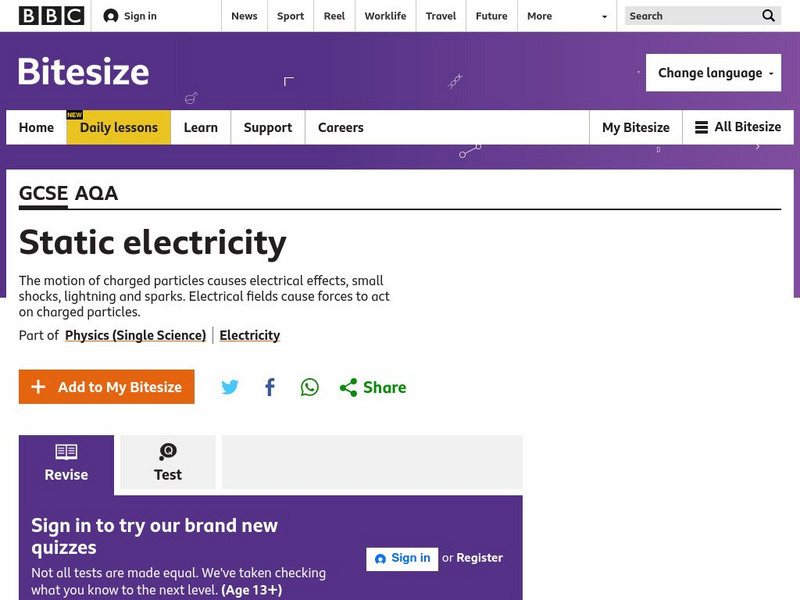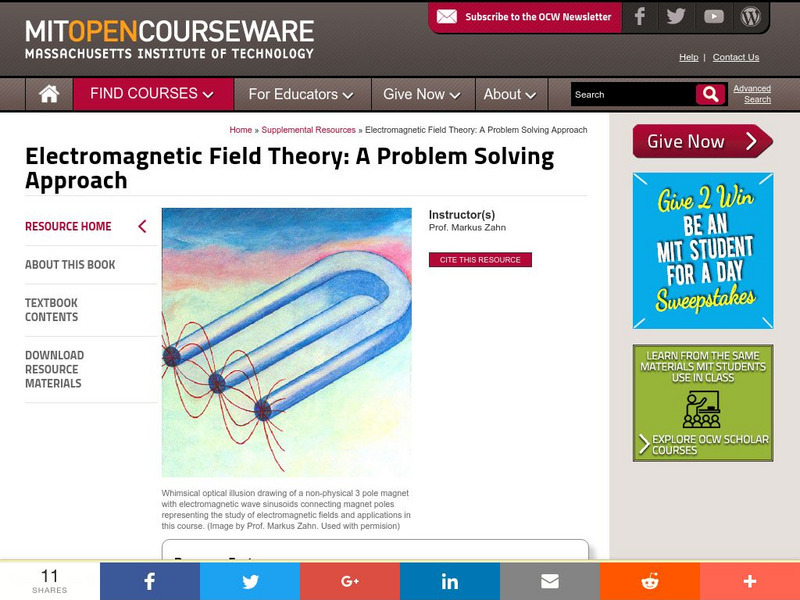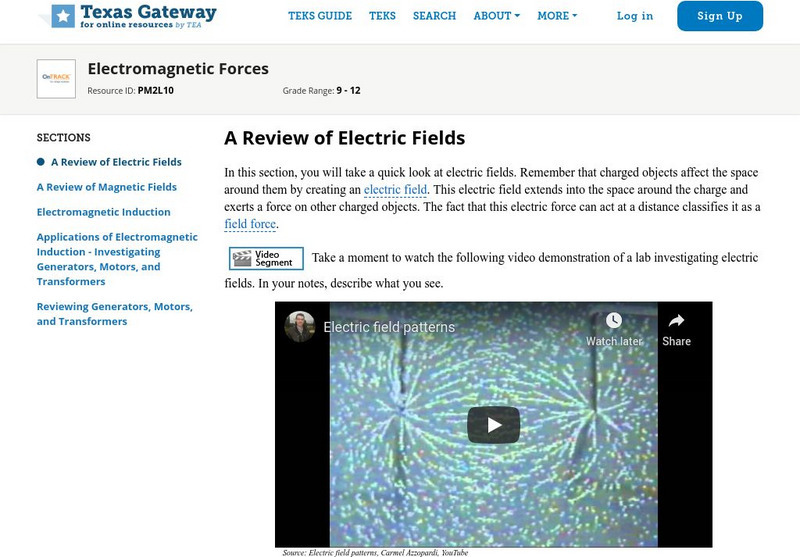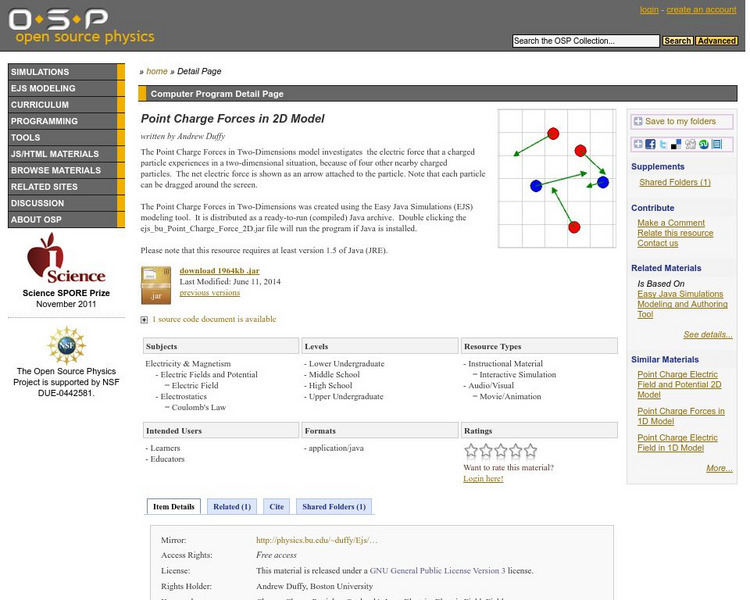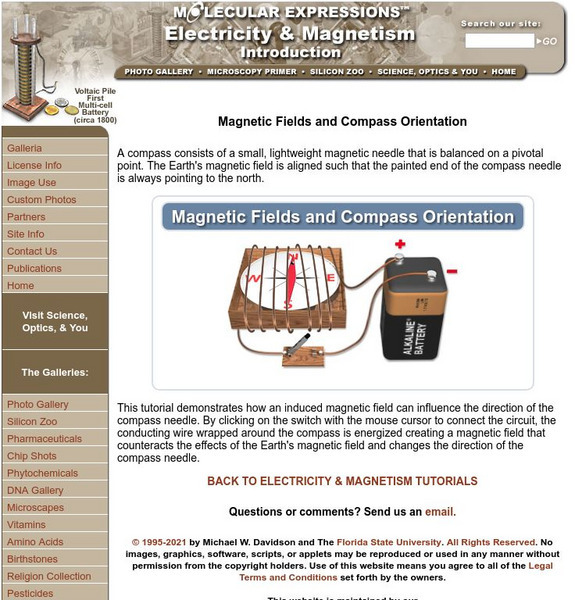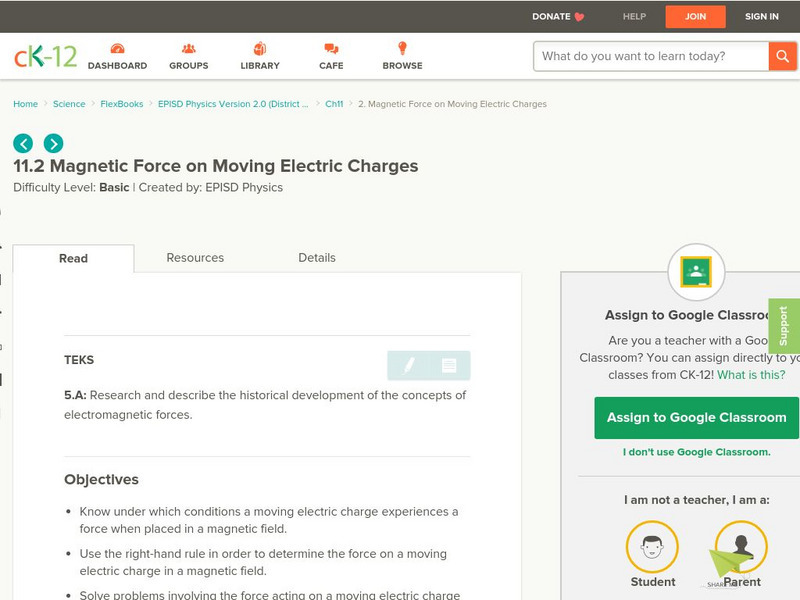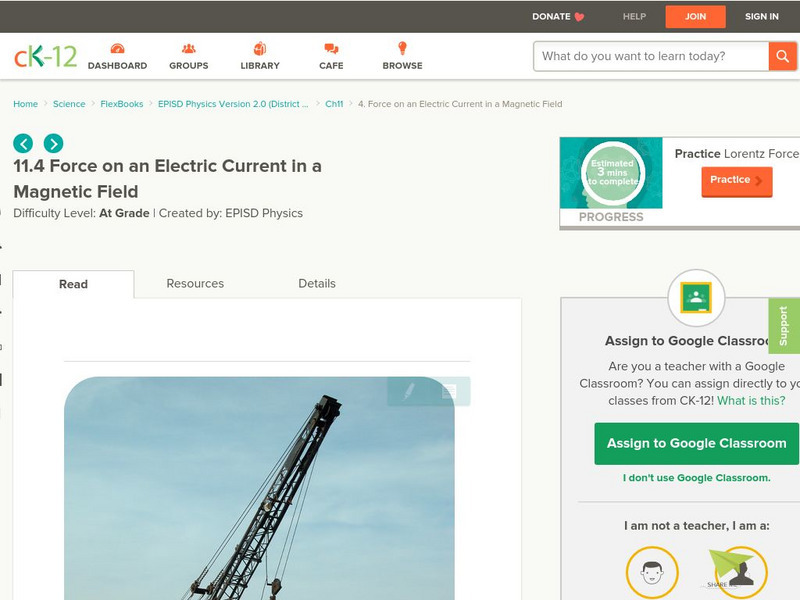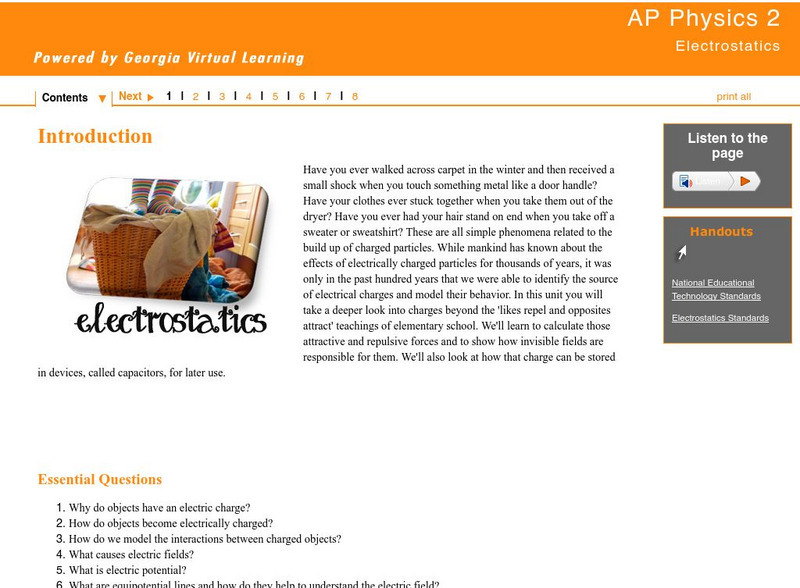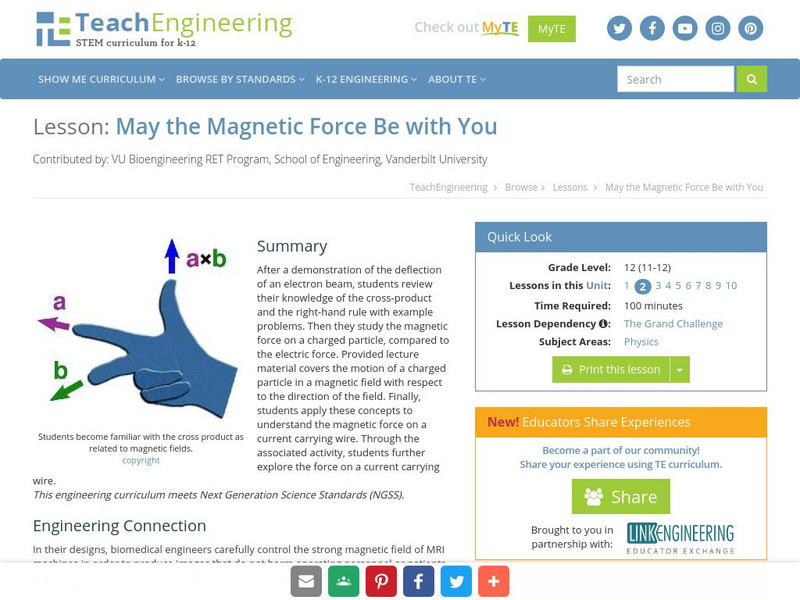Concord Consortium
Concord Consortium: Conversion of Electric Potential Energy
Explore the conversion of electric potential energy to thermal energy.
University of Colorado
University of Colorado: Physics 2000: More About Visualizing Electromagnetic Waves
Discusses the nature of an electromagnetic wave. Explains the oscillating electric field and represents it through clever graphics and animations.
CK-12 Foundation
Ck 12: Physics Simulation: Coulomb's Law
[Free Registration/Login Required] Learn how the placement of charges leads to an electric field and electric potential patterns in nearby space using our interactive simulation. A PDF worksheet and a video tutorial are also available....
Concord Consortium
Concord Consortium: Charge Intensity and Electric Force 2
Manipulate the charge on objects to explore the relationship between charge, electric field, and forces on objects.
American Association of Physics Teachers
Com Padre Digital Library: Open Source Physics: Charge Trajectories
Investigate a the forces exerted on a charged particle by electric and magnetic fields. Initially, find out how the charge behaves in an electric field. Then, see how the charge behaves in a magnetic field. Finally, initiate both fields...
BBC
Bbc: Gcse Bitesize: Static Electricity
This lesson focuses on static electricity, including how particles can be charged by friction, and electrical forces and why they repel or attract each other. Includes a link to a test.
Georgia State University
Georgia State University: Hyper Physics: Electricity and Magnetism
Georgia State University provides an indexing page for several other pages at the same site which contain information on electricity and magnetism concepts. Pages linked from this page contain many informative graphics, equations,...
Physics Aviary
Physics Aviary: Practice Problems: Force Electric in a Line
Students must find the net force on one of the charges in a line of charges.
Concord Consortium
Concord Consortium: Stem Resources: How Electrons Move
A collection of interactive activities and games to explore how electric fields and magnetic fields move electrons and charged particles in directions that can be planned. Understand that knowing how to control the movement of electrons...
Massachusetts Institute of Technology
Mit: Open Course Ware: Resources: Electromagnetic Field Theory
College-level electrical engineering textbook starting from the Coulomb-Lorentz force law on a point charge. Sample problems that reinforce the content are found at the end of each chapter. Includes downloadable excerpts of the textbook...
Texas Education Agency
Texas Gateway: Electromagnetic Forces
Given schematic diagrams, illustrations or descriptions, students will identify the relationship of electric and magnetic fields in applications such as generators, motors, and transformers.
Concord Consortium
What Are the Factors That Affect How Strongly Objects Interact With Each Other?
Exploration of models of electric field to explain how charged objects interact with other objects via simulations, practice and activities. Sponsored by Concord Consortium and the CREATE for STEM Institute at Michigan State University.
American Association of Physics Teachers
Com Padre Digital Library: Open Source Physics: Point Charge Forces in 1 D Model
Virtual simulation investigating the electric force that one charged particle exerts on another. Plot a graph of the electric force as a function of position.
American Association of Physics Teachers
Com Padre Digital Library: Open Source Physics: Point Charge Forces in 2 D Model
In this simulation, examine the electric force that a charged particle gains from nearby charged particles in a two-dimensional state. See the net electric force shown as an arrow attached to the particle.
Florida State University
Florida State University: Molecular Expressions: Magnetic Fields and Compass Orientation
Simulate the creation of an induced magnetic field through the use of a simple electric circuit. An interactive demonstration is included.
CK-12 Foundation
Ck 12: Magnetic Force on Moving Electric Charges
[Free Registration/Login may be required to access all resource tools.] This lesson examines how moving electric charges are affected when inside a magnetic field. Students are shown how to calculate the force on a single moving electric...
CK-12 Foundation
Ck 12: Force on an Electric Current in a Magnetic Field
[Free Registration/Login may be required to access all resource tools.] Students learn how a magnetic field affects moving charged particles or an electric current carried by a wire.
American Association of Physics Teachers
Com Padre Digital Library: Open Source Physics: Magnetic Force Three Wires Model
Investigate the idea of the force between straight current-carrying wires in this magnetic force simulation. See if you can rank the wires from largest to smallest based on the magnitude of their currents.
Georgia Department of Education
Ga Virtual Learning: Ap Physics 2: Electrostatics
In this unit students take a deeper look into charges beyond the simplified 'opposites attract." Students learn to calculate those attractive and repulsive forces and to show how invisible fields are responsible for them.
OpenSciEd
Open Sci Ed: 8.3 Forces at a Distance
This unit allows students to investigate the cause of a speaker's vibration in addition to the effect.
TeachEngineering
Teach Engineering: May the Magnetic Force Be With You
This lesson begins with a demonstration of the deflection of an electron beam. Students then review their knowledge of the cross product and the right hand rule with sample problems. After which, students study the magnetic force on a...
Concord Consortium
Concord Consortium: Target Game
Steer a charged particle to a target. Place particles in the game and charge them to guide a positive projectile around obstacles to hit a target. You can place any number of charged objects in any location to steer the positive particle...
Michigan State University
Michigan State University: Physics: Coulomb's Law
Here is a presentation of Coulomb's Law and the electric field potential formula, with example problems.
Orpheus Books
Q Files: Electricity and Magnetism: Electric Charge
Learn how electric charges work and about Coulomb's Law, which is used to calculate the strength of an electric force.


